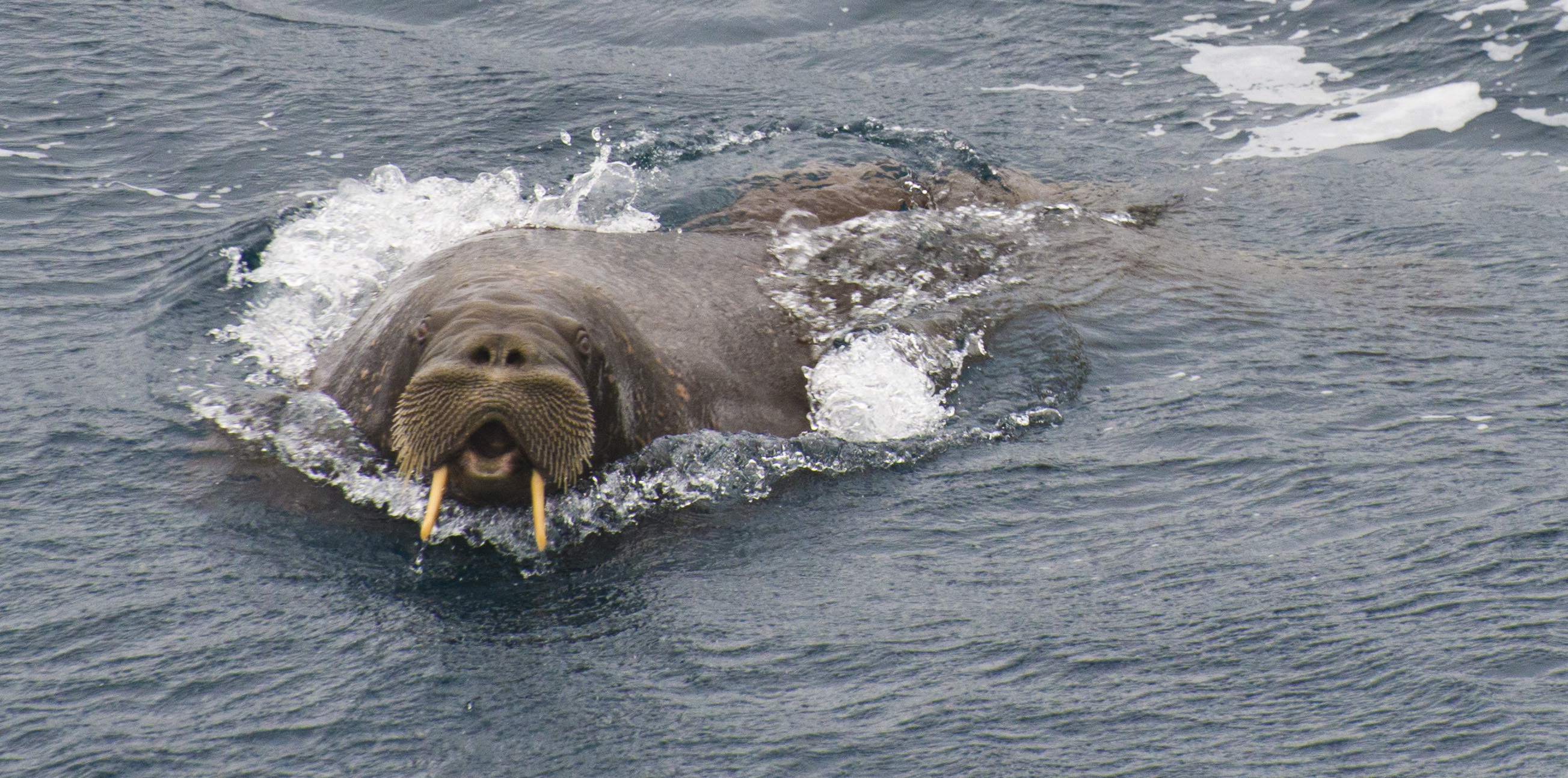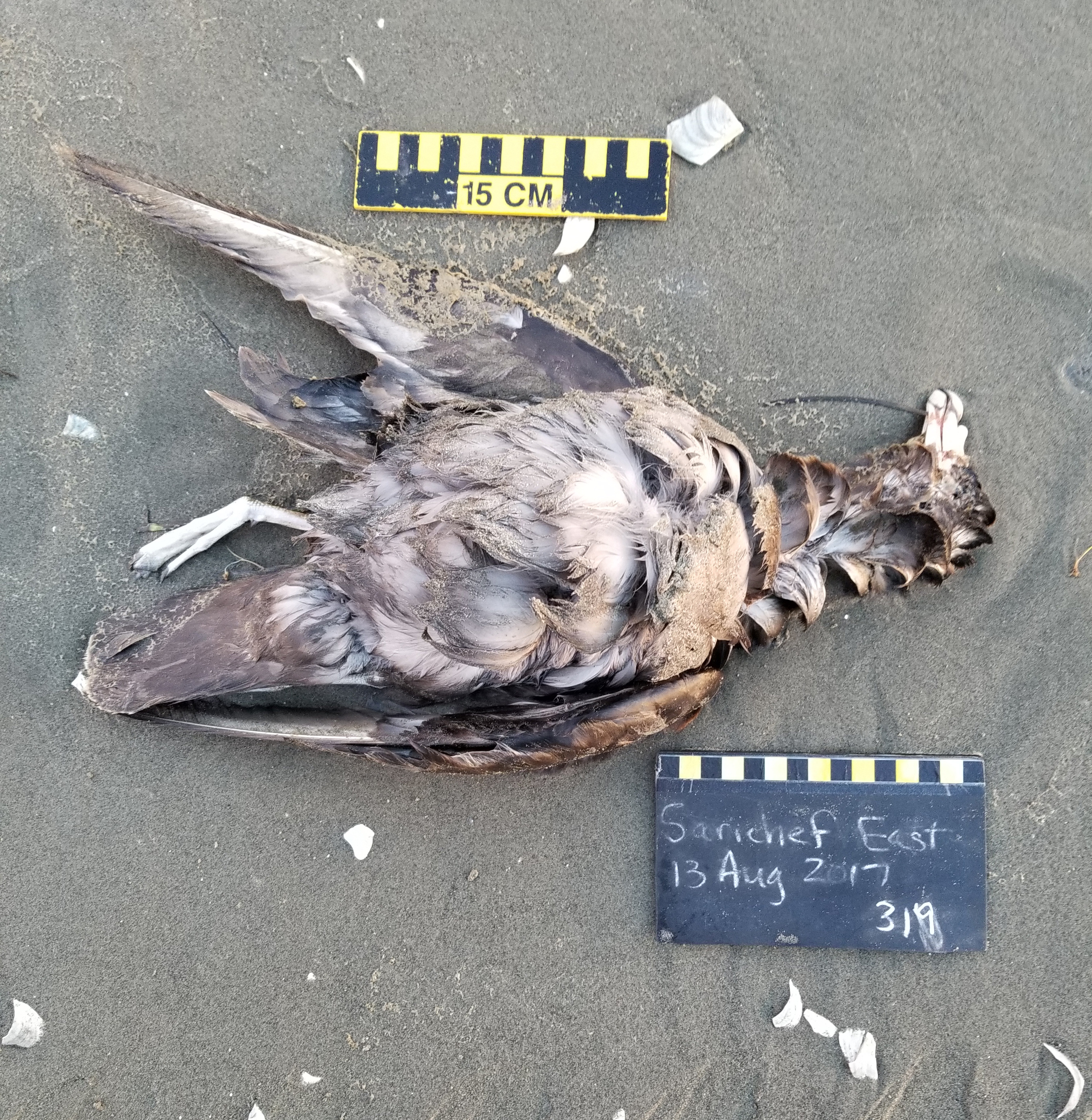Scientists investigating Bering Sea wildlife deaths find a toxin associated with warmer water

Months after dozens of walruses and thousands of birds died in mysterious circumstances in the Bering Sea, scientists have discovered a clue in the case: positive test results for algal toxins associated with warm waters.
Four walruses and five seabirds were carrying saxitoxin, an algal biotoxin that causes paralytic shellfish poisoning. Whether the saxitoxin contributed to the deaths is unknown and unlikely to be determined, but it is a sign of changes in the Bering Sea, where waters are now warmer than they were in the past and where sea ice has been running at record lows for this time of year, according to the National Snow and Ice Data Center.
The large number of dead birds found this year is part of a pattern. There were similar die-offs in the past couple of years in the Bering Sea and Gulf of Alaska, though affecting other species.
“The dead birds, that’s an indication that something’s awry,” said Robert Kaler, a seabird specialist and biologist with the U.S. Fish and Wildlife Service. “You see a broad range of species being affected. . . Maybe something more profound is happening here.”
The discovery of toxins in walruses and birds is the latest step in the wider investigation of the die-offs.
Four walruses were tested from a group of 39 found in August and September mostly along the Seward Peninsula. Three had washed ashore dead while the fourth had been killed by a local hunter, officials said. The saxitoxin was found in their intestinal contents, and levels were highest for the harvested animal. Most of the 39 dead walruses discovered on shore were too decomposed to be tested, said Gay Sheffield, a biologist and Nome-based agent for the Alaska SeaGrant program.

The five tested birds, all northern fulmars, were among the 1,600 found dead on Bering Sea beaches from June to September. The dead birds that were discovered likely represent only a fraction of the total die-off, scientists said. The dead birds that were found were emaciated, and are believed to have been killed by starvation or drowning. Now saxitoxin exposure has emerged as a possible factor in the animal deaths. But getting a precise identification of the killer is difficult, the scientists said.
“It’s a complicated story,” Kaler said. “What we have is a lot of associations, but not a smoking gun that explains it.”
The results follow what was the first documentation, in a study published in 2016, of algal toxins in marine mammals in Alaska’s Arctic and Bering Sea waters. That study, which used a decade’s worth of data, showed that whales, seals and walruses as far north as the Beaufort and Chukchi seas had algal toxins in their bodies.
As for the dead Bering Sea walruses and birds found this year, scientists don’t yet understand the effects that saxitoxin had on them, Sheffield said. ”What do the numbers mean? How much does it take to impact a seabird? We don’t know that,” she said. “It’s sort of a wide-open question.”
Also yet to be understood is how saxitoxin in walruses might affect the region’s indigenous people who eat walrus meat, Sheffield said. Since the documentation of algal toxins in animals of this region is new, scientists have not yet had time to understand the implications, including potential impacts to people, she said. “There’s just a lot of unknowns,” she said.
Kaler, a bird expert, said there are multiple ways that warming can be harmful.
With higher temperatures at the sea surface, the creatures that birds eat may be going into deeper and cooler waters – meaning the birds might not be able to locate their food, he said. Or it could be that the food is simply scarcer, he said. Warm waters mean a greater likelihood of exposure to algal toxins, he said. Weather also turned bad in the fall, he said.
“Then you’ve got a storm system that comes in on top of that,” Kaler said. “That’s kind fo the breaking point.”
The warm trend continues. Ice has been late in forming this winter; the Bering Sea and the Chukchi Sea north of the Bering Strait have had warm waters water temperatures through much of the year and record-low ice extent all autumn and early winter. The surface of the Chukchi Sea in August was, in some parts, 4 degrees Celsius (7.2 degrees Fahrenheit) warmer than the 1982-2010 average, and sea surface temperatures there have been warming at a rate of 0.7 degrees Celsius (1.26 degrees Fahrenheit) per decade since 1982, according to the National Oceanic and Atmospheric Administration.
Combined extent of sea ice in the Bering and Chukchi seas was the lowest in the satellite record and, as of Dec. 5, was only 52 percent of the 1981-2010 average, according to Rick Thoman, climate science and service manager for the National Weather Service.
https://twitter.com/AlaskaWx/status/938422060170096640
Low sea ice conditions — and associated warmth — are expected to persist in the Bering this winter. The Alaska Center for Climate Assessment and Policy predicts that this winter’s Bering Sea ice maximum, expected in March, will be 6 percent lower than the 1981-2010 average maximum.